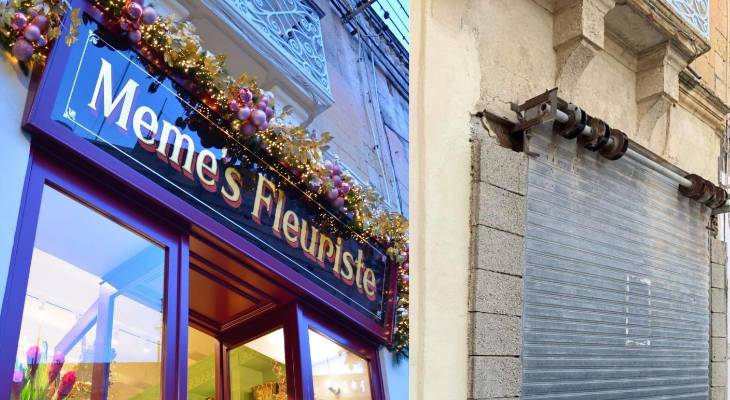A Tarxien-based florist who was praised for elevating the aesthetics of the surrounding streetscape may have to remove his embellished shop façade because it is currently covering stone corbels (saljaturi) that form part of a traditional Maltese balcony located above the shop window.
The façade, which shop owner Stephen Schembri says he invested around €7,000 to design and build, partially covers the above stone corbels or ‘blocks’, but he maintains they are still visible from a distance.
While the story presents as another innocuous tussle between a business owner and the country’s planning regulations, it feeds into widespread frustration across the country about what has been termed the uglification of Malta. And, while in this case the PA is being criticised for following its own regulations to the letter, others question the sense when unsightly projects, clearly meriting serious consideration as to their compliance with current regulations, do not face the same scrutiny.
The aesthetics of buildings on the islands have changed over time. With development and construction happening around the clock, Malta has a mix of modern looking buildings in some areas, traditional houses in others and in some (many) instances – with lots of criticism from locals – the two are blended in discord.

Featured in Mr Schembri's post: On the left: Meme's Fleuriste's shop now. On the right: The shop prior to Mr Schembri's ownership
The florist in question, Meme’s Fleuriste, is known for its colourful flower arrangements and its vibrant shop façade. The shop’s gilded signage is reminiscent of shop windows across the island from days gone by, and is sometimes adorned with floral arrangements, baubles and other eye-catching seasonal decorations.
Unlike those in some European cities, Maltese shop owners do not have such an established tradition of designing shop window displays in striking and particularly unique ways. Many shop owners in major retail cities like London and Paris invest thousands to have their facades and windows designed in an over-the-top manner, to the delight of many.
In the case of Mr Schembri, he says that he combined the traditional aesthetic of the environment, as can be seen from the shop’s signage, while going a step further. However, on Monday, he made an announcement via social media, claiming that his façade has not yet been approved because it is covering the stone corbels – adding that the authorities know too well of the shoddy work (pastażata) that was present before he invested in an upgrade.
Asked by WhosWho.mt whether he had been contacted by the Planning Authority (PA) directly asking for changes, Mr Schembri said that while the PA had not issued any formal notice, his architect said he is risking losing a bank guarantee being held by the PA that is tied to the shop-front works.
A bank guarantee is usually issued prior to works and returned solely after the works present at the site in question are found to be in conformity with the plans submitted originally to the authority. In this case, the Superintendence of Cultural Heritage is the authority engaged to confirm the compliance.
“We submitted a sanction again to approve the fact that the stone corbels were slightly covered but the PA does not want to accept, because part of the guidelines is that the corbels are not covered. I did not cover the corbels in their entirety, and they are still visible from a distance,” he explained.
Mr Schembri explained that the shop has been officially open since 4th November 2023. The vision for the façade had been in the works for two years prior to the opening as he wanted to incorporate a traditional look, similar to old-school shops in Valletta.
“What I know for sure is that I spent all that money, and I will not be changing the door. Nowadays, it’s extremely rare to find such craftsmanship,” he added.
The possibility that the façade would need to be removed and replaced with something fully in line with regulations was met with disappointment by commentators.
“What did you cover? Two squared blocks?” one commentor asked. Another replied that despite not being covered entirely, “a plant could have also easily covered them had it grown.”
A local addressing the owner told him that he had “made the village square more beautiful. [Passersby] stop and admire.”
Another one cheekily commented that had he put some chairs and tables in the street, then any permits would have easily been approved.
